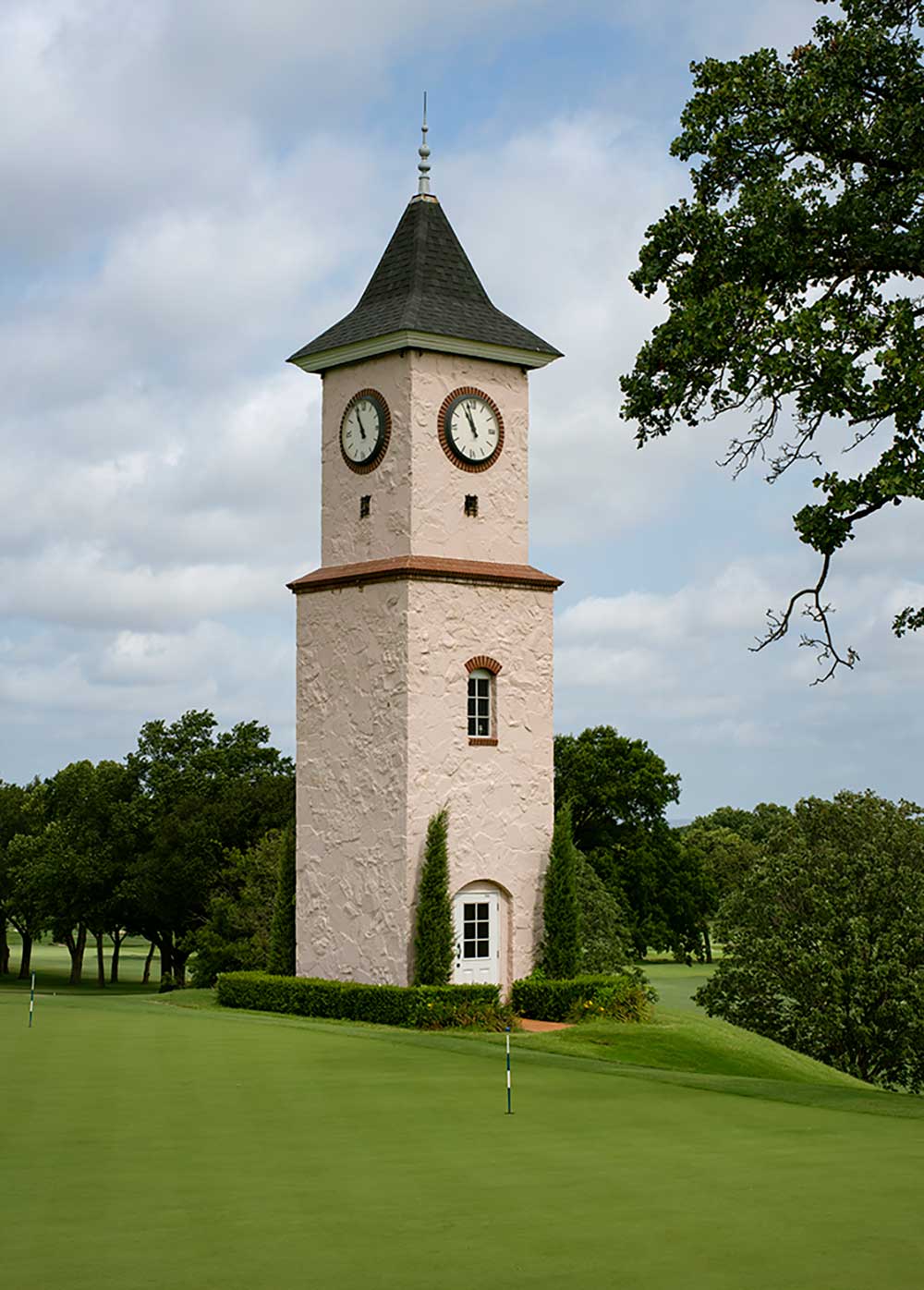Let’s play “match the architect to the course,” starting with Augusta National and Pine Valley.
If you said Alister MacKenzie and Harry Colt, you’re not wrong, but you left out a designer who touched them both.
No points docked for your omission.
Lots of folks are unfamiliar with the complete portfolio of Perry Maxwell, a hidden gem of the Golden Age. From 1914, when he broke ground on a course in his own backyard, until his death in 1952, Maxwell laid his hands on a long and luminous list of projects. He tweaked National Golf Links of America and co-created Colonial. He stamped his name, with either full or partial credit, on Prairie Dunes, Crystal Downs and Old Town Club — all GOLF Top 100 courses.
And we haven’t even gotten to Oklahoma, where he built his most expansive body of work, highlighted by Southern Hills Country Club, which will host the PGA Championship next week. Like a great sleeper course, Maxwell has always been esteemed in architecture circles. But he cut a low-key profile that belied the size of his contributions.
“The big thing was he wasn’t prolific on the coasts or in the big markets of the Northeast, and he wasn’t the ‘hot’ architect like [Donald] Ross or MacKenzie,” says Christopher Clouser, author of The Midwest Associate: The Life and Work of Perry Duke Maxwell. “The deeper you dig, though, the more you’re struck by just how much he did.”
If the scope of his work comes off as unexpected, so does the path he took into the field.
Born in Kentucky, in 1879, Maxwell moved as a young man to Oklahoma, where golf was barely bigger than bobsledding. In the town of Ardmore, where he settled, two people played the game. Maxwell wasn’t one of them. His sport was tennis. Only at the urging of his wife, Ray, who worried about his health in the sweltering heat (Maxwell had suffered from tuberculosis), did he swap his racket for a set of clubs. He was 35.

It was Ray who also planted the idea that a patch of farmland the couple owned might be suited to become a course. In 1913, Maxwell started drafting plans for what became Dornick Hills, his first course and the first in Oklahoma with grass greens.
A banker by trade, Maxwell had no formal architecture training, but he’d taken pains to educate himself, visiting clubs around the South before heading northeast to meet C.B. Macdonald, the granddaddy of American design. In 1923, on a longer trip to Scotland, he made the acquaintance of MacKenzie, establishing a friendship that gave rise to a fertile stateside partnership. Its fruits included collaborations at the University of Michigan and Ohio State and, most famously, Michigan’s Crystal Downs CC.
Unlike MacKenzie and other leading architects of the era, Maxwell never published books or articles detailing his principles of design. But his observations, quoted in pieces penned by others, made plain his view that the best approach was not to mess with much.
You could spend a lifetime on that property and not figure out a better routing.
“It is futile to attempt the transformation of wholly inadequate acres into an adequate course,” he told The American Golfer in 1935. “Invariably, the result is the inauguration of an earthquake.” A worthy site, he added, “should be there, not brought there.”
Which didn’t mean you couldn’t shape cool greens. So distinctive were the contours of Maxwell’s putting surfaces, favoring ripples over tiers and ridges, that they became known as “Maxwell Rolls.” The term lives on, as does the aesthetic, informing the work of prominent modern-day designers, including Bill Coore and Tom Doak.
On top of his own projects, Maxwell’s artful reputation earned him work at National and Pine Valley, among other prestigious clubs. In the mid-30s, he was brought in by Augusta National, first to help with the introduction of a trial patch of bentgrass and then to remodel a handful of greens, perhaps most notably the 10th, which he pulled back some 50 yards from its original location, turning a benign par-4 into a bear. Given modifications he also made to the 5th, 6th, 7th and 17th, you could argue that no architect other than MacKenzie and Bobby Jones had more influence than Maxwell on the home of the Masters.
Though he wasn’t everywhere, he often seemed to be.
“He was Forrest Gump-like in that way,” says Ed Oden, founder of the online Perry Maxwell Archive. Aside from rubbing shoulders with movers and shakers, he had a knack for making cameos at historic occasions. In 1930, Maxwell was at Merion when Bobby Jones captured the Grand Slam. Five years later, he was standing by the 15th green at Augusta when Gene Sarazen jarred his “shot heard ’round the world” for double eagle.
At home, in Ardmore, though, Oden says, Maxwell was “more of a George Bailey figure,” understated, charitably minded, devout — a linchpin of small-town life. When he wasn’t busy serving the local church or punching the clock at the savings and loan, he occupied himself with architecture, a commitment that only intensified after Ray’s death, in 1919, from appendicitis. And there was plenty of work. Isolated from golf’s largest markets, Oklahoma was also insulated by pockets of oil money. The jobs kept coming, even after the Depression hit.

Of the dozens of courses Maxwell built in the state, none held more cachet than the project he carried out in Tulsa, on rolling land donated by the oil magnate Waite Phillips. Southern Hills (GOLF’s World No. 46) was meant to be a flagship country club. Maxwell assigned himself the added ambition of making it the best course in Oklahoma and a draw for national tournaments. The site allowed for that, with its tumbling terrain spliced by a creek and tributaries that Maxwell employed to sweet, strategic effect. The club, established in 1935, opened for play the following year.
In the decades since, Southern Hills has been worked on more than once, but nothing in the way of major surgery. The most recent procedure, a 2019 restoration by Gil Hanse and Jim Wagner, focused, Hanse says, on “peeling back layers of evolution,” removing trees, reviving creek beds, returning slopes and rumples to green edges that had either bulged or faded. Some fairway bunkers were shifted. Some yardage was tacked on. The 7th green was nudged closer to the creek. But Maxwell’s original blue-print remains.
“You could spend a lifetime on that property and not figure out a better routing,” Hanse says. “It’s one of those cases where the bones are so good you would never want to change a lot.”
Now comes the 2022 PGA Championship. It’s the fifth time the event has been held at Southern Hills and the eighth major championship for a venue that has also staged three U.S. Opens. In a hallway by the locker room, a memorabilia exhibit includes photographs of Maxwell and correspondence from him. That area won’t open to spectators. But Southern Hills itself will be on full display, another turn in the spotlight for a celebrated course whose designer deserves the same.












